| Proales ardechenis, lateral view of a specimen from (1). |
| |
 |
| Proales ardechenis, in contrast to the above specimen in this specimen from the same location/ sample the red eyespot is visible (1). |
| |
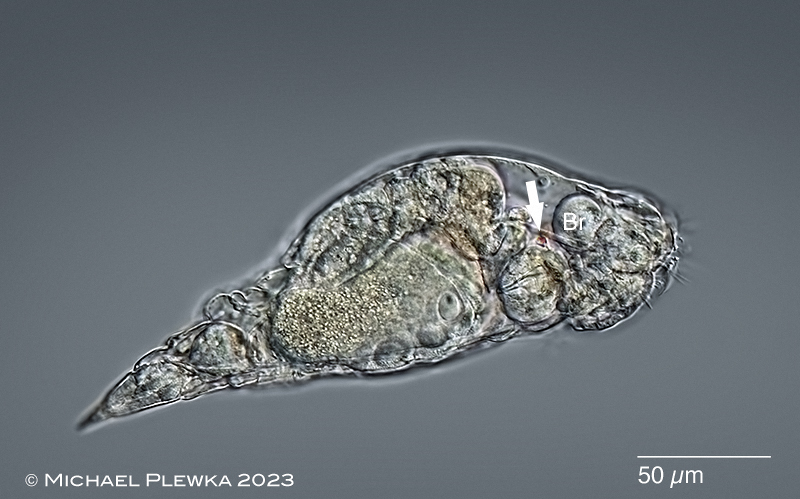 |
| Proales ardechenis, this image shows that the eyespot (arrow) is not attached to the brain (Br). (3). |
| |
 |
| Proales ardechenis, specimen with retracted corona, focal plane on some of the muscles and (part of) the ducts of the nephridial system. The arrow points to the right lateral antenna. (see also image below) (1) |
| |
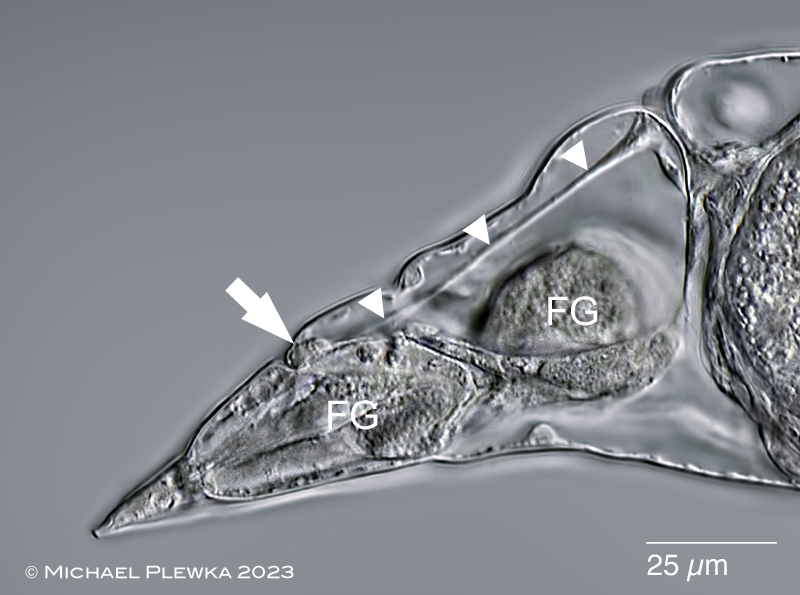 |
| Proales ardechenis, foot with conspicuous footglands (FG) The arrow points to a structure at the penultimate foot pseudosegment which may be the structure that DeSmet and Verolet called "antenna". But in contrast to the dorsal and lateral antennas in the structure here no sensory cilia could be observed. The triangles mark a fiber that may be a nerve fiber (connecting the "antenna" with the brain) or a retractor muscle. (2) |
| |
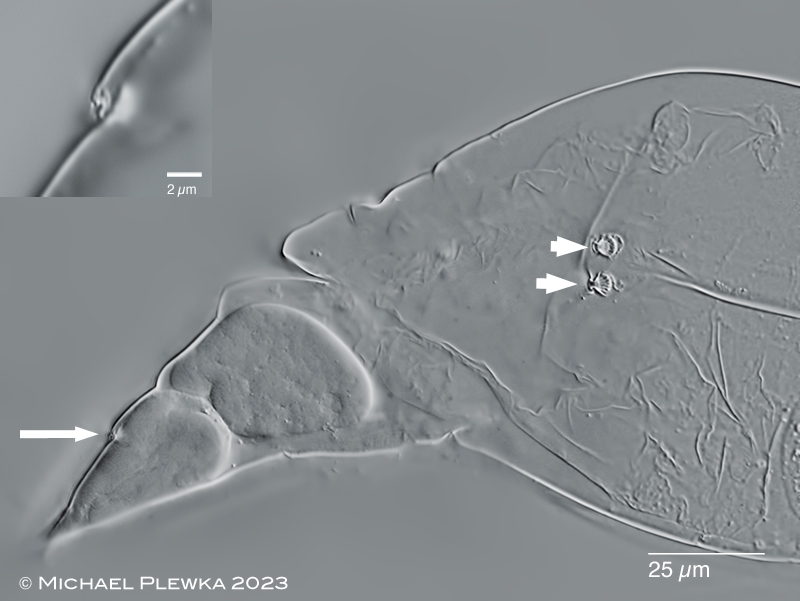 |
| Proales ardechenis, posterior part of specimen semi-macerated with SDS; lateral view.
This composite of two images shows the two openings of the left and right lateral antennas (arrowheads) in the integument. The arrow points to a structure at the connection between the penultimate and last foot pseudosegment (see also insert) which is different from the connection between the other foot pseudosegments and may be an opening. The insert shows a crop.(2) |
| |
| |
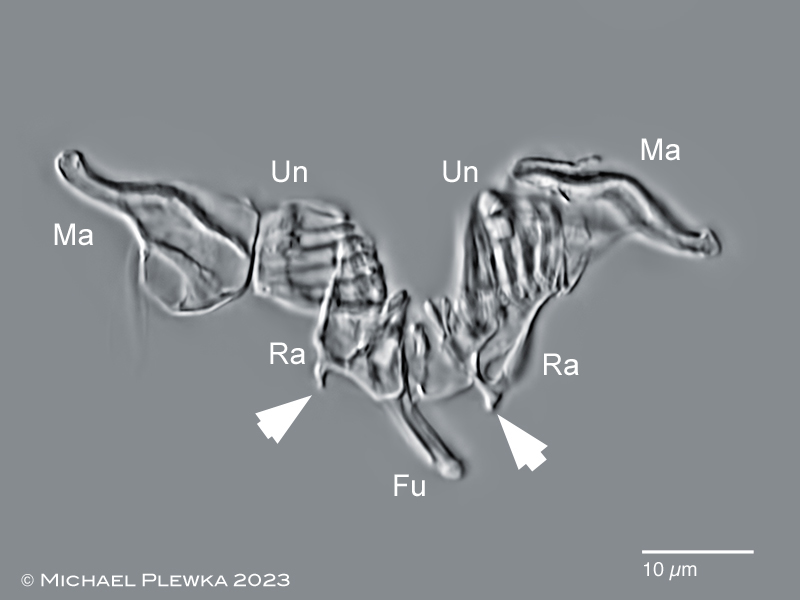 |
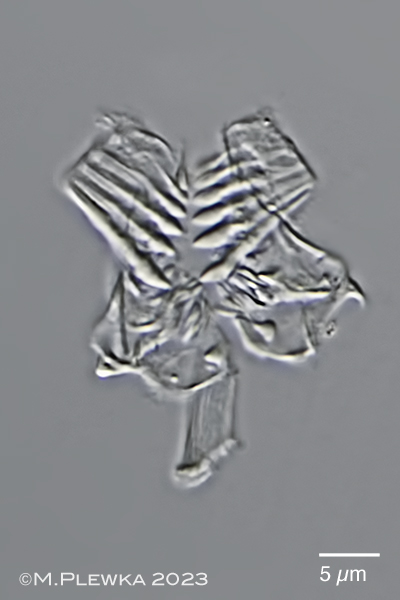 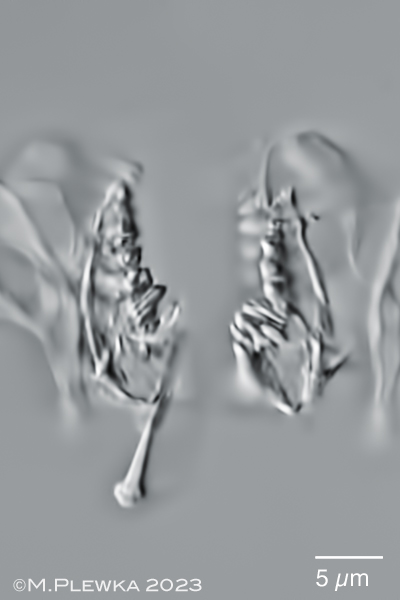 |
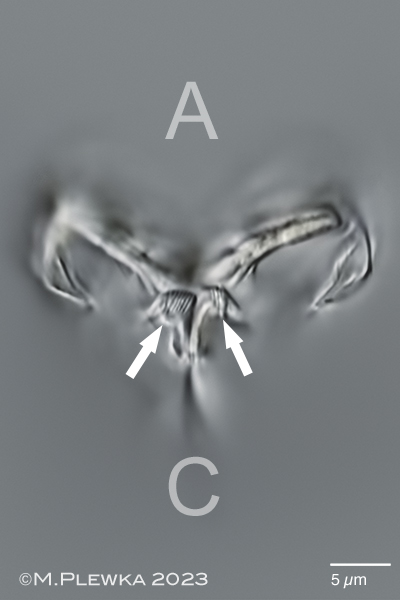 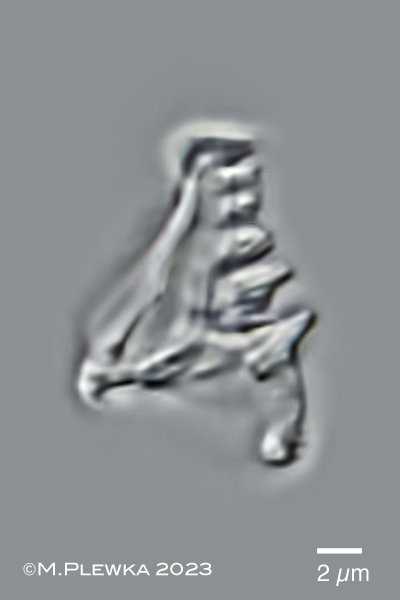 |
| |
Proales ardechenis, 3 aspects of the malleate trophi. Images not to scale.
Upper image: complete set; characteristic are the hook-shaped alulae of the rami (arrowheads).
Mid image: trophi parts of the second specimen. Left: incus, frontal view; the unci have 6 teeth each. Right: rami & fulcrum, caudal view, focus plane on the dentated inner margins of the rami (Unci & manubria are out of focus). (1)
Lower image: left: complete set; ventro-apical view; focal plane on the asymmetric crest of scleropyli at the basal apophyses (arrows) (A: apical side; C: caudal side (2). Right: single (roughly triangular) ramus of 3rd specimen.(2) |
| |
| |
| |
| |
| |
|
|
| |
| |
| |
|
|